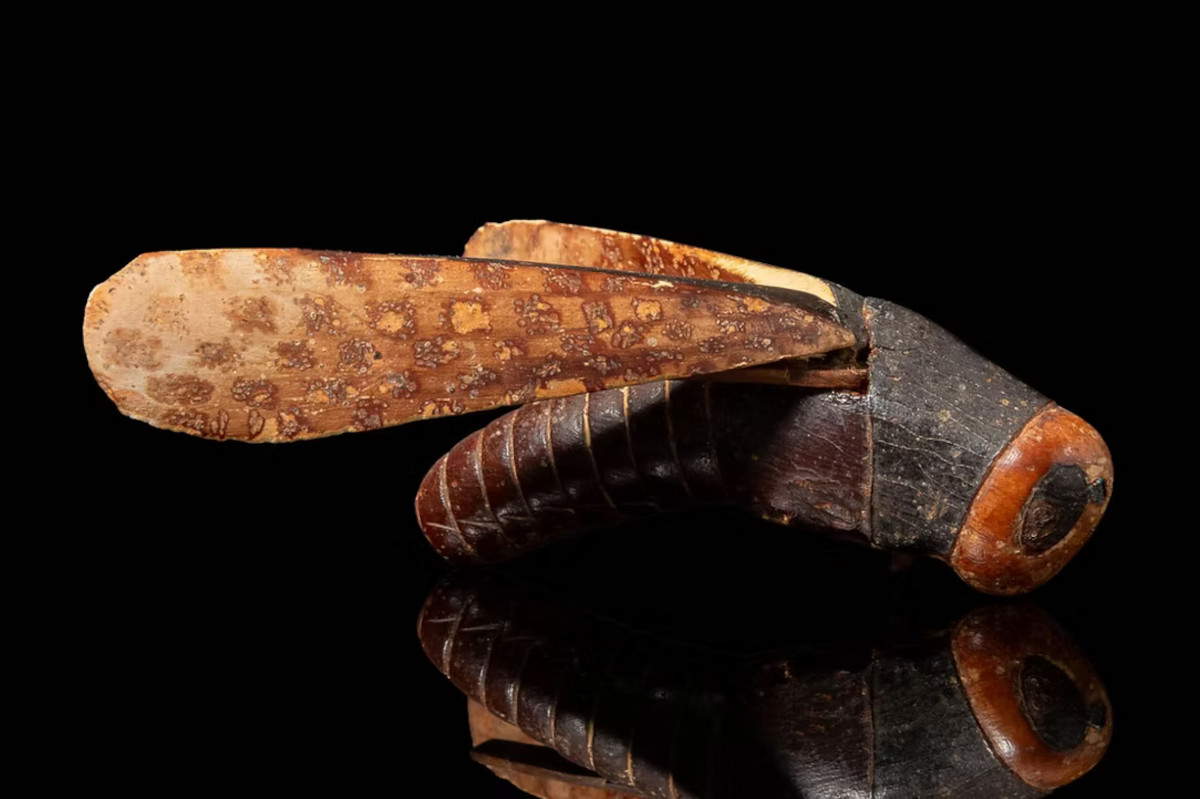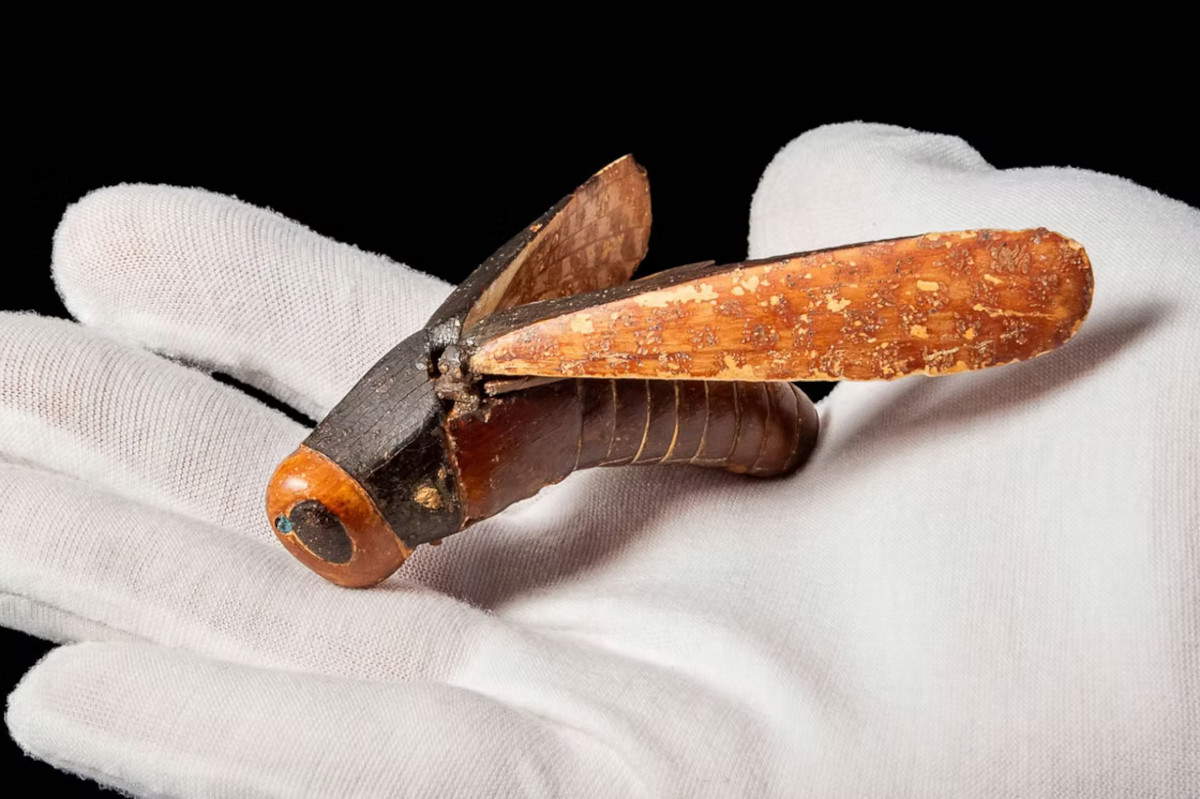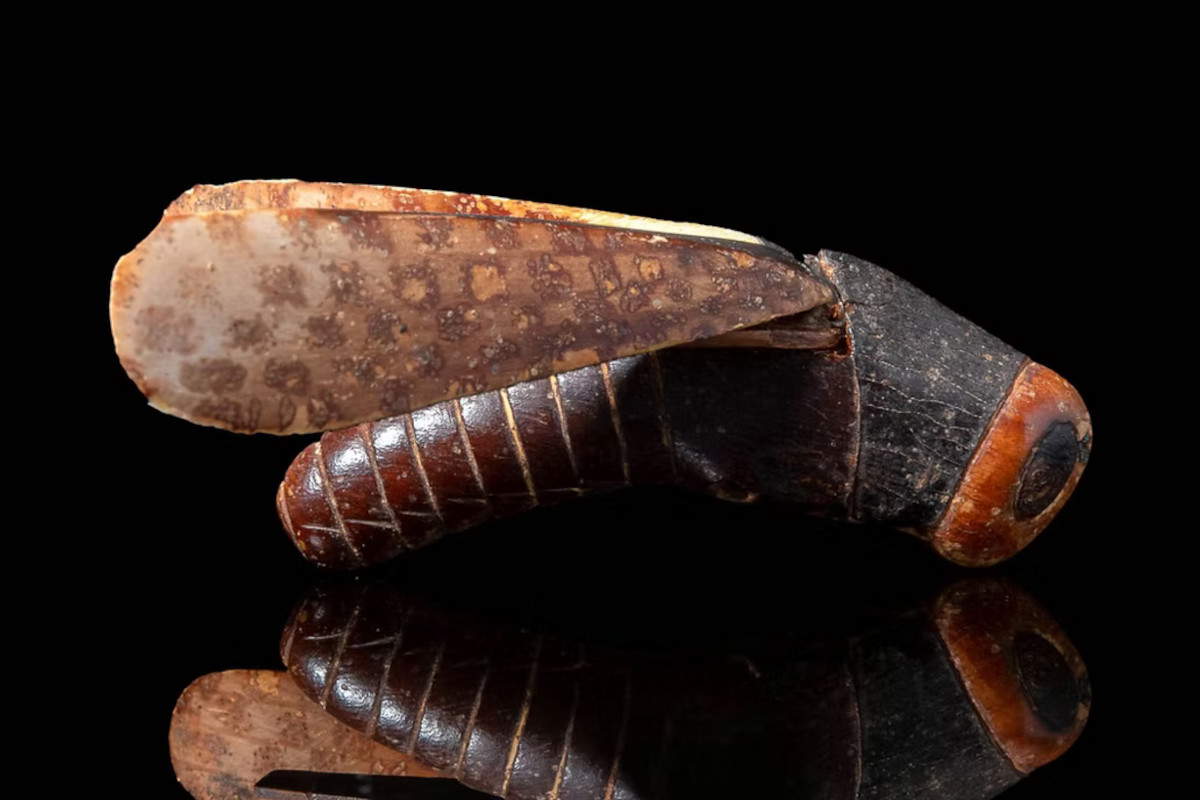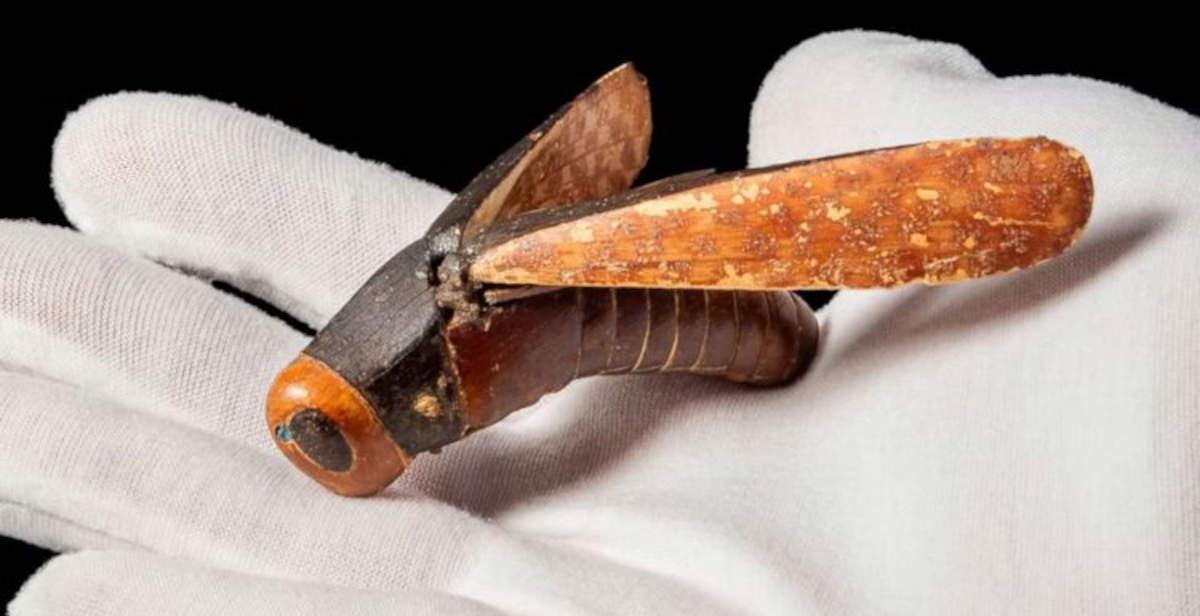On July 27, a rare Egyptian grasshopper carved from ivory (a cosmetic container) and dated to about 3,300 years ago was auctioned in London by Apollo Auctions. Just 9 centimeters long and estimated at between £300,000 and £500, 000, the work went for £340,000, sparking new interest in an object that, according to some academic speculation, may have come from Tutankhamun’s tomb. Known as the Guennol Grasshopper, the grasshopper was named after the well-known Guennol collection started in the 1940s by Alastair Bradley Martin, heir to one of Pittsburgh’s largest steel fortunes. The term Guennol, which means “martin” in Welsh, referred directly to the surname of the collector, who had distinguished himself by the forward-looking purchase and appreciation of ancient artworks.
Among the best-known pieces in his collection was the Guennol Lioness, a 5,000-year-old Iranian statuette that had fetched a record $57 million in 2007. The grasshopper, by contrast, had been acquired by Martin at a much lower price: in 1948 he bought it for less than $10,000 from the estate of New York antiquarian Joseph Brummer. According to Brummer’s catalog papers, now housed at the Metropolitan Museum of Art in New York, the object came from the Egyptian dealer Maurice Nahman, who would in turn obtain it from Howard Carter, the discoverer of Tutankhamun’s tomb.

The hypothesis, although lacking definitive documentary evidence, has found fertile ground in the Egyptological community, particularly because of the stylistic similarities between the grasshopper and other artifacts in the pharaoh’s tomb. Many scholars have long believed that Carter, during and after excavations in the royal tomb (the KV62), retained and later sold some unrecorded objects, often small in size but of high aesthetic and symbolic value. When he died in 1939, numerous artifacts were found in his London apartment, some of which bore Tutankhamun’s name or showed clear signs of belonging to his burial outfit. Carter’s executor, Harry Burton attached to the Metropolitan Museum, returned some objects to the Egyptian government and sold other specimens, often through private channels.
Over the following decades, several museums, including the Met itself, acquired artifacts of uncertain origin. Carter’s personal notes, now lost, hinted at provenance from the tomb, although officially such objects were generically attributed to western Thebes or other areas of ancient Egypt. Indeed, in the original description of the grasshopper, Martin’s curator pointed out its probable Theban origin, while the collector himself did not hesitate to mention it ironically among his “favorite objects from Tut’s cursed tomb.”
The Guennol Grasshopper later ended up in the hands of Sheikh Saud al-Thani, a member of the Qatari royal family and known for his extensive collections of ancient art. The purchase, which took place before 2007, was concluded for a sum of about $1.2 million. Al-Thani, a controversial personality in the antiques world, was accused in 2005 of embezzling public funds used to finance purchases for his private collection. He was placed under house arrest, and after his death in 2014, his heirs began liquidating the collection, often selling at prices below purchase price. The grasshopper was also included among the assets to be divested.

Ahead of the July 27, 2025 auction, Apollo Auctions had pointed out that it had conducted extensive due diligence on the object, obtaining a customs certificate attesting that it was not from theft or looting. In any case, the printed catalog, on page 8(we leave the link here), stated that the object was “believed to be among the known and potential lost items from Tutankhamun’s tomb” and had once belonged to Howard Carter’s personal collection. When questioned by the trade press, the auction house had clarified that the attribution to the tomb was intended as a recent academic last guess and not an established fact, and that in the absence of excavation photographs, citations in Carter’s official records, or unequivocal documentation, there could be no question of historical or legal proof.
“The connection to Tutankhamun’s tomb is a recent academic hypothesis and not an established fact, and as such does not constitute legal or historical evidence,” Apollo Auctions said. “There is no excavation photograph of this object in the tomb, Carter never listed it in the inventory, and no definitive documentation showing that it came from KV62.”

Despite the claims, the Tutankhamun connection has continued to raise questions. In the past, figures such as Thomas Hoving, former director of the Met, had described the grasshopper in his 1978 book Tutankhamun: The Untold Story(link here), listing it among the group of objects taken from KV62 and then dispersed on the antiquities market. Some artifacts identified by Hoving as coming from the tomb were returned in 2010, but others remained visible in museum collections, fueling a still-open debate about the treatment of objects of dubious provenance. Despite the attention generated by the auction, neither the Egyptian Ministry of Tourism and Antiquities nor the British Museum had publicly commented on the sale of the grasshopper. The silence surprised part of the scholarly community, considering that in similar cases Egypt had often expressed firm opposition to the circulation of artifacts of possible illicit origin. Even the major auction houses Christie’s and Sotheby’s, previously contacted to handle the sale of the object, had declined, leaving the task to Apollo Auctions, a younger entity in the international antiques scene.
The grasshopper, although damaged in some of its parts, particularly the fragile wings, was described by those who handled it as a mesmerizing object, the result of fine artistic workmanship intended for a sophisticated audience of the time. Its story, in any case, remains suspended between archaeology, private collecting, and the documentary uncertainty that still marks an important part of the ancient art trade.
 |
| Egyptian grasshopper sold for £340,000 at auction in London: is it linked to Tutankhamun's tomb? |
Warning: the translation into English of the original Italian article was created using automatic tools. We undertake to review all articles, but we do not guarantee the total absence of inaccuracies in the translation due to the program. You can find the original by clicking on the ITA button. If you find any mistake,please contact us.